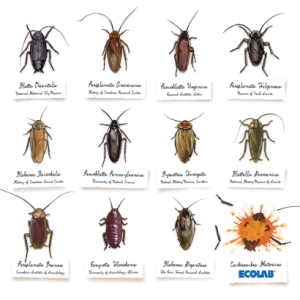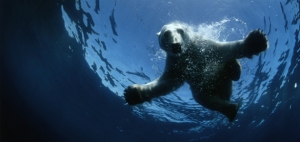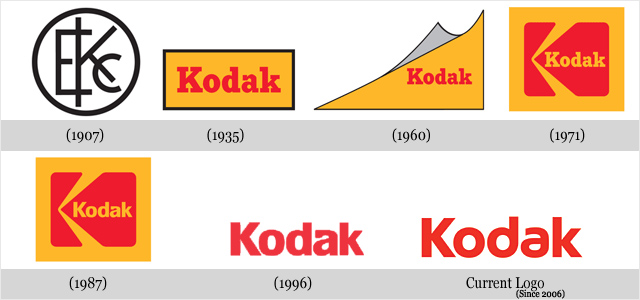To tie the ends together this morning, I’ve mentioned in previous blog post “A Moment to Think of Our Future” on how Charles Darwin’s theory in evolution plays an important role to the future of the human species.
I’ve personally have seen Darwin’s theory of evolution at work – when I was locked up in Hong Kong. During that time, it wasn’t living in the utmost luxury and roaches were abundant everywhere, especially it was the hot and humid summer. Having been living in mostly urban areas and cities for most of my life, I’ve seen roaches. They ‘were’ very dark brown, almost pitch black color at the size of about my pinky finger (at the largest I’ve seen) in longitude oval shape with quite an extended antennae. However, being locked up and literally had nothing more interesting to do but using my slippers to try smacking at roaches whenever one passes by my bedside: I’ve noticed something different. It seems to me that there are a new species of roaches and/or that the ones mentioned have evolved. There are ones that I’ve noticed that are much smaller at the size of my pinky nail in half with a much lighter brown color and it seems that they are not in one single color but a patched work blended with beige. These little ones are much rounder in shape and you should see how alert and quick they are! The old version were easy to smack in one blow of my slippers; these mini rounded ones seems like their peripheral vision is wider and further – before you can lay your slippers a little more than a feet away from them, they halt for a second and when you begin the motion of whacking – they literally ‘split the ^&*%’ out of your sight.

Given that roaches is a species that have lived for the longest ever on planet Earth, it’s about time they have evolved according to Darwin’s survival of the fittest and adaptation, eh? Absolutely – and this has to thanks to the possible over use of pesticides in Hong Kong. For any given species to evolve, it’s the survival of the fittest during the struggle of existence of their environments to adapt to the ultra extreme or difficult surroundings to survive. In the roaches world, the overuse of pesticides in Hong Kong has lead to the large version of roaches to adapt into a more compact exoskeleton that has camouflage capabilities to the lighter colors because living underground has proved to be tougher as constant gallon sized LPG containers pesticides pump being sprayed into city drainage more than enough that they have to surface to sunlight. Scrapping the long antennae because who needs to smell and taste the pesticide that only leads to death; but the added benefit of an extended sensing capabilities to their surroundings to be zooming back and forth to escape death.
Now, I’ve gave instances of how viruses are merely even considered as a living organism but parts of a DNA/RNA genetic information but they are already evolving rapidly with the examples of a new flu virus every year; it’s stronger every year if you do catch one by having to be staying in bed for a few days and it seems that the regular strength Tylenol/Panadol just doesn’t do it to stop the symptoms. To the ever changing HIV virus, which is a running silent epidemic that has no effective cure yet but only suppressing the process of their replication. To what’s now an issue that China needs to address as soon as they can where the Avian flu virus that clips the wings of birds instantly like dropping dead flies that are quickly adapting to environments to be able to transfer from birds to humans, to now a possible case or two of human to human.
Most of us have seen Jurassic Park. Most of us have seen dinosaur skeletons in museums. They’re quite impressive, isn’t it? Archeologists have dug up so many dinosaur skeletons that they flourished on planet Earth that ranges from being herbivores to carnivores to scavengers – to be on land and in the air. From what I learned through documentaries of Discovery and National Geographic channels are that there have been a few theories of why and how did dinosaurs became extinct. A large meteor crashed into Earth and caused fragments to disperse far enough to all parts that created volcanic like fires that consumed most living things. Then there was how food sources became extremely scarce that again survival of the fittest, first the herbivores are gone, then the carnivores and left with scavengers pecking on corpses and when corpses decayed to a point where bacteria and other micro-organisms were even too overwhelming for scavengers that killed them too. And the last one is some sort of communicable disease had wiped them all out, which it is very similar to the second theory that ties them hand in hand.
Time to use proved and possible theories and apply them. The human population of Earth is constantly rising. The questions of where to find natural resources such as energy, food, potable water have been never been more apparent when some nations have moved from fresh produce to everything chemically engineered with emulsifiers, additives, coloring and preservatives. Simply go to a grocery store in Hong Kong and pickup a range of items and you’ll see on the ingredients label that comes in the form of codes E500, 150d, 338 etc. Not to mention that I’ve did a taste test of Coca-Cola bottled in Hong Kong, Japan and in the United States that noticing significant taste differences that are due to the amount of oxygen in the water itself that affects the carbonation; and whatever that the local water department adds in ‘small or large’ amounts of: chlorine, salt, sulfur, algae, rust, manganese, calcium, magnesium to ‘balance’ so-called ‘potable water’. My experiment and findings are that the one bottled in Hong Kong is almost disgusting when compared to Japan and United States with the carbonation literally fizzles in thin air in the matter of 15-minutes in an aluminum can package. With the United States following that matches what i’ve known since a little kid to the most crisp and clean taste from the one from Japan. Sorry to make Coca-Cola sound like a bottle of wine – but it’s a beverage that I’ve grown up with and nothing beats a hot sizzling day or over a spicy meal with an ice cold Coca-Cola – listening to the carbonation like rain drops on a spring day – gulp, gulp, gulp… ahhhhh! To me, it’s ‘always’ Coca-Cola; ‘it’s the best or nothing’ because it’s simple pleasures that I can afford that ‘opens happiness’.

While Coca-Cola opens happiness for me from time to time, the famous sort of ‘mascot’ Cola Bear is a Polar Bear that lives in the Arctic. For those who’ve seen To the Arctic 3D, only released in IMAX format had a few scenes of Polar Bears. The snowy white fur coat is simply amazing, especially when they are swimming and it’s like waves of glowing translucent threads waving in a monochromatic color scheme of blues that compares to the view of flying on a Boeing 747 at 38,000-ft with fluffy white clouds over the sky. As much as Meryl Streep tries to narrate as eloquently as possible to lessen the concerns over the Arctic, again – it’s never been more apparent that melting of the polar caps not only causing the Polar Bears unable to jump from icebergs to icebergs, but their constant swimming hunting for food has made them impossible to store enough fat that makes nurturing the next generation a challenge; that aside, biologists would probably agree that the melting of polar caps unleashes an array of new forms of micro-organisms that humans have never been in touch with. Pros and cons to this with possible pharmaceuticals to develop new medication to cure the aches and pains of us humans or it can work the other way, that it may be possible to be the one that wipes out an entire species?

On a side note, it probably means that before you know about it, Venice will be an underground water city that wipes away part of Italian history and we’d probably have to go through extensive cosmetic surgery to have webbings casted on our hands and feet to be just like Kevin Costner in Waterworld.
It seems like I’m all over the place in things that I’m talking about here. Connect the dots. The above mentioned that a possible communicable disease – plus the ever growing human population and the search for natural resources may or may not wipe out the human species just like the dinosaurs. In the biology classification of species, the phylum of Chordata is all species with a hollow dorsal cord. They are the more complex species, especially with those that has a vertebrae and a central nervous system. When it’s easy for viruses to mutate and micro-organisms to evolve and even insects have caught on the bandwagon, but it is very highly unlikely that complex species can catch on due to complexity. If the entire phylum of Chordata is much harder to evolve and there are signs that birds are threatened by new viruses, it’s only the matter of time that it will stop the ever growing population of humans as we as humans are on the top of the food chain. When the rest of the Chordata phylum disappears, humans will be the only ones left to be face with survival of the fittest and the horrible imagery of James Bond’s Skyfall with the notion from villain, Raoul Silva of having mice/rats trapped in a confined space and due to starvation, they turn to each other – eating themselves and only two remain…
It will be beyond my lifetime and there’s still generations to come before this may or may not happen? However, if we do not set the stage for what can or cannot be changed, the future of the human species are at risk? For those of you who’ve heard Morgan Freeman in a narrative of how humans can protect other species on Earth – we should ask ourselves if we can or cannot protect other species, but also ourselves.
——————————————————————————————————————————————-
Photo Credits:
http://pestmd.net/outdoor-pest-control/outdoor-roach-control/ (Original Image from Ecolab)
http://www.savebiogems.org/polar-bear-sos/ (Photographer: Martha Holmes)
http://movieline.com/2012/04/20/review-to-the-arctic-3d-highlights-enviro-woes-polar-bear-cubs-in-dazzling-imax/ (To the Artic: IMAX 3D)
——————————————————————————————————————————————-





